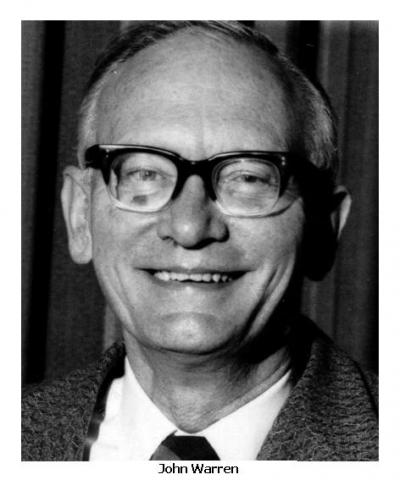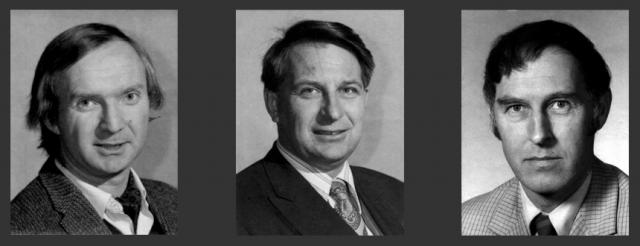A few weeks ago, I set out on a quest to solve some of the great mysteries of TRIUMF: deciphering who chose the color palette for the cyclotron and how to turn this into a Headline News story. What started out as a simple task with a single lead resulted in conversations with people who had worked at TRIUMF 30 years ago, and were willing to offer very interesting and personal stories. Although the individuals were not able to fully determine what happened in 1972 when the cyclotron was built and colors were painted in its different sectors, I determined that my current findings were worth sharing with the TRIUMF community and the general public. Read on!
When presented with this assignment, I was originally asked to investigate the Group of Seven, a famous group of Canadian landscape painters in the 1920s. It was Nigel Lockyer's belief (TRIUMF's current director) that one of the wives of the Group had chosen the colors for the main buildings. Looking to confirm this legend with someone who worked at TRIUMF closer to the time period in question, I contacted former director, Erich Vogt, to request an interview. Checking his calendar via e-mail, Vogt almost immediately replied "I would be happy to meet with you 
I thought I'd be lucky if at least one of my e-mails was answered by one of the retirees; to my surprise, everybody but one either wrote or called me back swiftly-albeit each with a different impression. The first was Karl Erdman who was the Radio Frequency Group Leader during the time the cyclotron was being built. He seemed to have a vivid memory of Warren's goals, "The presentation of science in a visual community had to look exciting, Warren was very keen on this and at the time B.C. Binning was a very prominent artist. Warren wanted to reflect an industrial design and color co-ordination, Binning was presented with this idea and provided the recommendations." The next lead was the cyclotron's Chief Engineer during the same time era, Joop Burgerjon. He recalled fewer new details but offered some insight and an alternative reason as to why Binning was asked to make this decision for TRIUMF, "I do remember that the sectors had to be painted and that John was going to consult this artist about the colors. I did not know the artist and did not meet him. I was not particularly enthused about the colors he chose, but this matter is purely subjective. It is obviously impossible to choose a color scheme that everybody likes. That may well have been the reason why John preferred not to choose the colors himself." Finally, Terry Creaney, project manager of the time, was consulted; Creaney wasn't able to solve the mystery but emphasized what everybody else seemed to always remember, "I was interested to receive your enquiry regarding color schemes in the cyclotron Vault. I have no recollection of this major decision. I am sorry I cannot be more helpful. However, as project manager from 1968 till 1973, I was very close to John and personally had a great admiration for his direction of the project during those critical years. He was the right man at the right place at the right time."
The story ends with 3 things for certain. Almost 40 years later, the color scheme for the sectors of the cyclotron's magnets remains the same. If in fact B.C. Binning determined the palette, TRIUMF holds the artist's largest work of art of his entire career. And finally, even if all details of this TRIUMF trivia remain sketchy, one is most certainly true: the tremendous respect employees hold for TRIUMF's first director, John Warren, transmitted lucidly in every e-mail, phone call and personal interaction that formed part of this investigation.
Michael Craddock, Karl Erdman and Joop Burgerjon (photo taken early 1970s)
By: Maria Jose Crousillat
Communications Assistant

